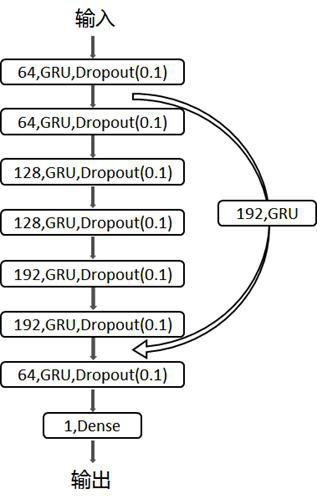Nitrogen dioxide concentration prediction method and system
A nitrogen dioxide and concentration prediction technology, applied in prediction, design optimization/simulation, instruments, etc., can solve the problems of not considering the influence of space factors, poor portability, and few prediction methods, etc., to achieve wide coverage and ensure transplantation The effect of reducing the prediction residual error
- Summary
- Abstract
- Description
- Claims
- Application Information
AI Technical Summary
Problems solved by technology
Method used
Image
Examples
Embodiment 1
[0035] The present embodiment 1 provides a nitrogen dioxide concentration prediction system, which includes:
[0036] The acquisition module is used to acquire monitoring data; the monitoring data includes air pollution monitoring data, meteorological data, remote sensing reanalysis meteorological field data and geographic covariate data;
[0037] The prediction module is used to process the monitoring data respectively by using a pre-trained random forest model, an extreme gradient boosting tree model and a gated recurrent unit neural network model combined with residual connections to obtain three predicted values of nitrogen dioxide concentration ;
[0038] The calculation module is used to calculate and obtain the final nitrogen dioxide concentration value based on the three predicted nitrogen dioxide concentration values and in combination with a weighted average algorithm.
[0039] In this embodiment 1, the above-mentioned nitrogen dioxide concentration prediction s...
Embodiment 2
[0057] In this embodiment 2, a method based on machine learning to predict the short-term NO of an air quality monitoring station in a certain area is provided. 2 Concentration method to achieve large-scale, multi-sequence NO 2 Rapid and accurate concentration prediction solves the problem that the current machine learning prediction method has low portability and cannot be applied to new monitoring stations with little historical data.
[0058] In Example 2, the short-term NO of the air quality monitoring station is predicted based on machine learning 2 Concentration method, the implementation process specifically includes the following steps: Step 1, obtain air pollution monitoring data and auxiliary feature data sets covering a certain area, and obtain multi-source data sets; Step 2, perform long-term multi-source data sets Preprocessing, time and space fusion, using resampling technology to generate data sets with different time resolutions; step 3, based on the fused mul...
Embodiment 3
[0077] In this embodiment 3, a machine learning-based prediction of short-term NO in air quality monitoring stations is provided. 2 Concentration method, the implementation method specifically includes the following steps: Step 1, obtain air pollution monitoring data and auxiliary feature data sets covering the target area; Step 2, perform preprocessing, time and space fusion on long-term multi-source data sets, Use resampling technology to generate data sets with different time resolutions. Step 3, based on the fused multi-source data sets, use feature engineering to extract spatio-temporal information and add them to the data sets and divide training sets and test sets; Step 4, train multi-source data sets based on machine learning Timing NO 2 The model of the relationship with the feature vector, and finally realize the NO of multi-time series in the target area 2 Concentration Prediction.
[0078] The specific calculation is to use z-score standardization to map the orig...
PUM
 Login to View More
Login to View More Abstract
Description
Claims
Application Information
 Login to View More
Login to View More - R&D
- Intellectual Property
- Life Sciences
- Materials
- Tech Scout
- Unparalleled Data Quality
- Higher Quality Content
- 60% Fewer Hallucinations
Browse by: Latest US Patents, China's latest patents, Technical Efficacy Thesaurus, Application Domain, Technology Topic, Popular Technical Reports.
© 2025 PatSnap. All rights reserved.Legal|Privacy policy|Modern Slavery Act Transparency Statement|Sitemap|About US| Contact US: help@patsnap.com


